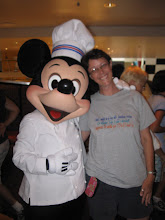After a week away, I’m back with the continuation of Family Linen.
The second half of this book is as entertaining as the first with some subtle shifts in the narrative voice. Smith relies less on the view points of the individual character and shows more interaction. This, as mentioned by several classmates, is a sort of “weaving” of the fabric of the story, much like linen is woven together (my paraphrasing). After Elizabeth dies, her children are left to deal with the pain that her death causes each of them. However, they now learn to lean on one another to help deal with that pain. They slowly begin to learn to accept one another and to come together as a family unit, something that was not possible as long as their mother was alive. Elizabeth’s views and personal issues spilled over onto her children, thus preventing them from bonding with one another early in life.
There is only one chapter in which we ‘meet’ Elizabeth and it is very enlightening. Until that point in the book, the reader sees Elizabeth only through the eyes of her children and siblings. To see her life through her own eyes gave me a deeper understanding of her.
Days of Light and Darkness: Memoirs
Elizabeth has a flair for the dramatic as well as the poetic. Her writing style is elegant and fits the elegant manner in which she has tried to live. Unfortunately, that elegance is not terribly realistic, nor are her views of the world around her. She is angry about her sister Nettie’s tom-boyish ways. She feels hurt at her father’s seeming preference of Nettie over her, even though it is Elizabeth who tries so hard to make their home comfortable and inviting after their mother’s death. I thought of Elizabeth as a very traditional Southern Bell who was born a hundred years too late. Her thoughts, her writing style, and her morals seem to hearken back to an earlier day, the day of plantations and hoop skirts. She does not fit in well in the 20th Century.
The chapter written from Elizabeth’s viewpoint is a short one and it is the only chance we have to get to know her as she sees herself. I would have liked to see more of her life as she grew older and had children.
It is from Nettie that we learn about Elizabeth’s first husband, Jewell, and what really happens to him. It is not Elizabeth who kills him, but Fay, with whom he has fathered a daughter. Jewell repeatedly takes advantage of Fay and her mental handicap. He rapes her, as Nettie witnesses,
“And the worst part about it was Fay’s face, which I could still see, I could see her face all the time, over Jewell’s back, above his white shirt. Her face had changed from that waiting, knowing look into something terrible where wanting and hating went back and forth like the shadows of clouds across a field, back and forth faster and faster, ending up as something awful which you’ve not got the words to say” (234-5).
Fay gives birth to Candy, who is raised as Elizabeth’s daughter and it is Fay who kills Jewell and dumps his body in the well--not Elizabeth, as Sybill remembers through hypnosis.
Toward the book's end, many things happen at once. The body of Jewell is found, Sean tries to kill his father, but the gun misfires, and Fay is found dead.
The book abruptly moves forward some weeks to Karen’s wedding. Elizabeth’s children are learning to be a family and that their differences aren’t really all that important. Family is family and you accept them and love them anyway. It’s a rather hokey thought, but an apt one, I suppose. Don and Myrtle have done some work on the family homestead and are now living there. The wedding of their pregnant daughter Karen has brought the family together again, but this time it is under happier circumstances. They seem much more accepting of one another and it is difficult to imagine the scene unfolding happily if Elizabeth was still alive. It was she who kept the family apart for so many years. Now that she is gone, the siblings are free to see one another through different eyes, not through the eyes of their mother. There is no more competing for her love and approval.
I did enjoy the book, but I felt that it hurried the ending a bit. I would have enjoyed seeing a bit more of the healing process as it happened between the siblings, though Smith did manage to wrap it up fairly neatly and without any gaping holes. Sybill lost some of her bitterness and edge, Myrtle lost some of her need for approval. Sean learned the importance of his parents and that, though they may be pains in the butt, they really do mean well. Lacy is accepting her lot in life, that of divorced woman; Candy continues to style hair, oblivious to her real parentage and Arthur seems to have found a woman who may be able to keep him in line while helping Nettie and Clinus in the process. Basically, Family Linen is a story about a dysfunctional family realizing that they can be dysfunctional and still love one another. Another happy ending
Honeymoon Part 3: Return From The Dead
12 years ago

No comments:
Post a Comment